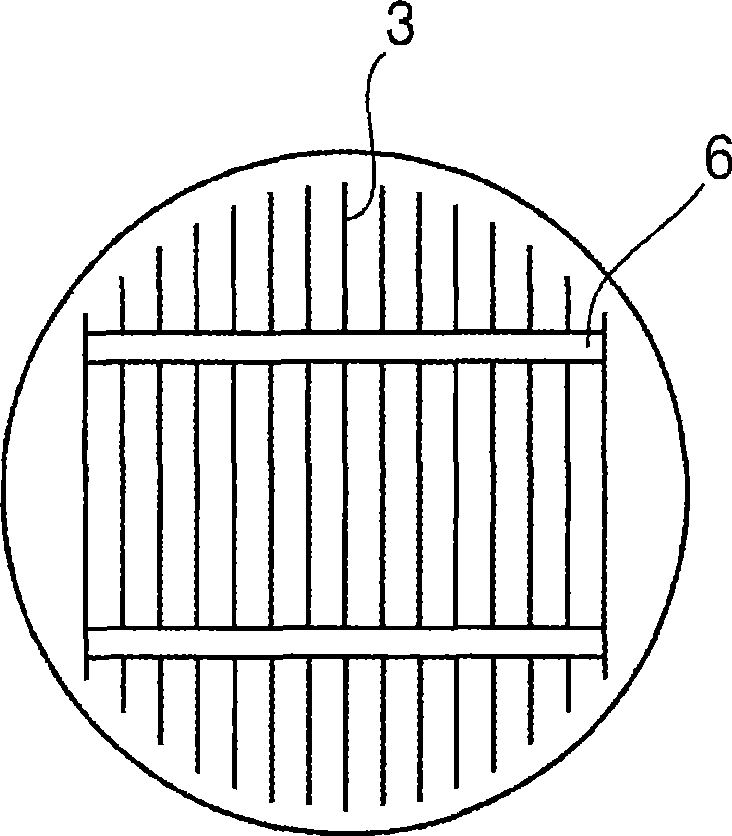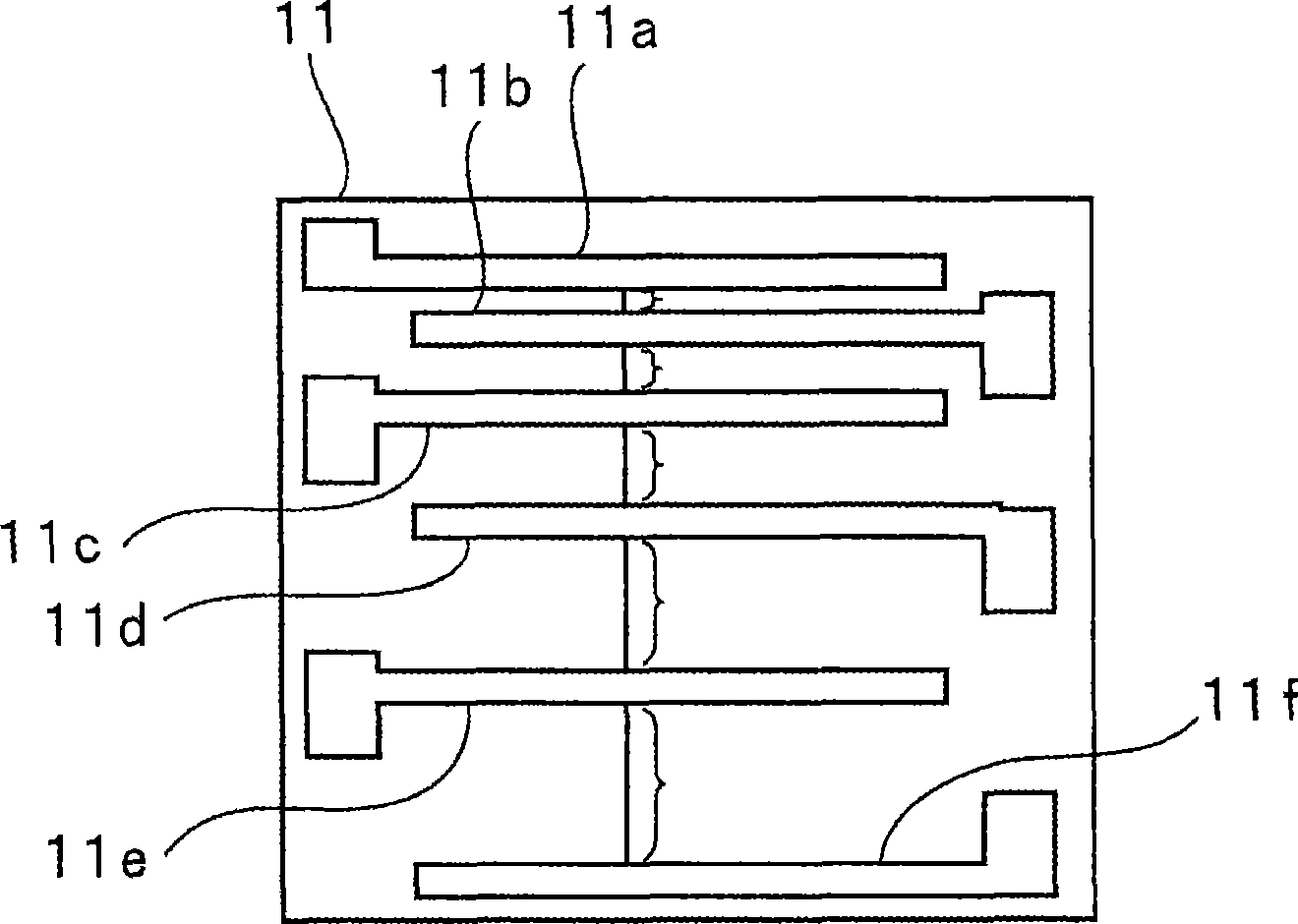Conductive paste and solar cell
A solar cell and electrical conductivity technology, applied in the field of solar cells and light-receiving surface electrodes, can solve the problem of no glass frit display, etc., and achieve the effects of improving bonding strength, superior environmental resistance, and superior reliability.
- Summary
- Abstract
- Description
- Claims
- Application Information
AI Technical Summary
Problems solved by technology
Method used
Image
Examples
Embodiment Construction
[0024] Hereinafter, the present invention will be clarified by describing specific embodiments of the present invention with reference to the drawings.
[0025] figure 1 is a partially broken front cross-sectional view showing a solar cell according to an embodiment of the present invention, figure 2 is a partially enlarged plan view schematically showing the electrode structure formed on the upper surface thereof.
[0026] The solar cell 1 has a semiconductor substrate 2 . The semiconductor substrate 2 has a structure in which an n-type Si-based semiconductor layer 2b is formed on an upper surface of a p-type Si-based semiconductor layer 2a. Such a semiconductor substrate 2 is obtained by diffusing impurities on one side of a p-type Si-based semiconductor substrate to form an n-type semiconductor layer 2b. However, the structure and manufacturing method of the semiconductor substrate 2 are not particularly limited as long as the n-type Si-based semiconductor layer 2b is f...
PUM
| Property | Measurement | Unit |
|---|---|---|
| Softening point | aaaaa | aaaaa |
Abstract
Description
Claims
Application Information
 Login to View More
Login to View More - R&D
- Intellectual Property
- Life Sciences
- Materials
- Tech Scout
- Unparalleled Data Quality
- Higher Quality Content
- 60% Fewer Hallucinations
Browse by: Latest US Patents, China's latest patents, Technical Efficacy Thesaurus, Application Domain, Technology Topic, Popular Technical Reports.
© 2025 PatSnap. All rights reserved.Legal|Privacy policy|Modern Slavery Act Transparency Statement|Sitemap|About US| Contact US: help@patsnap.com



